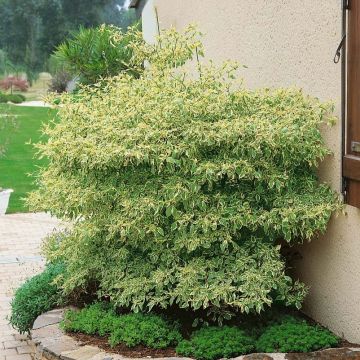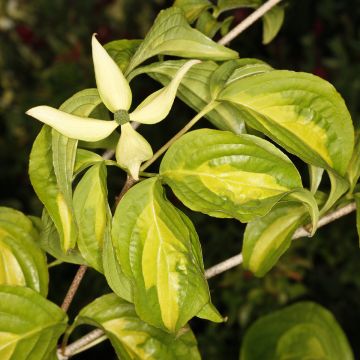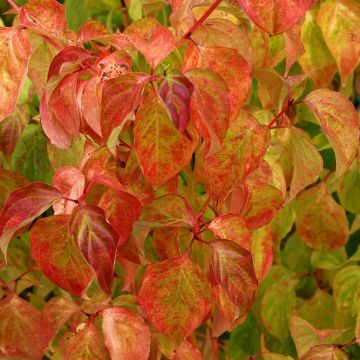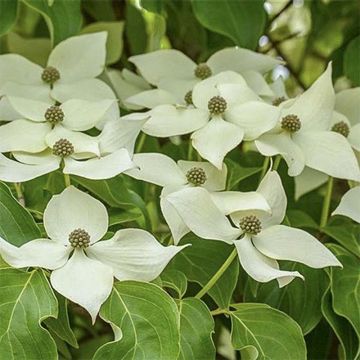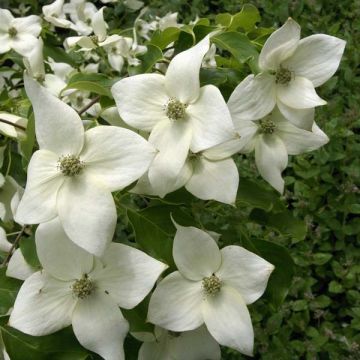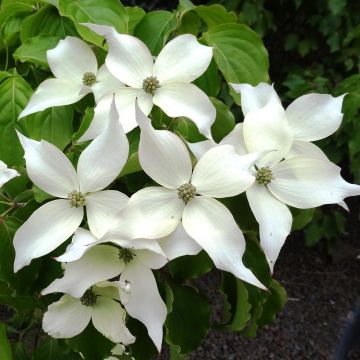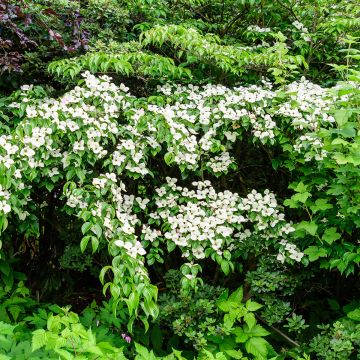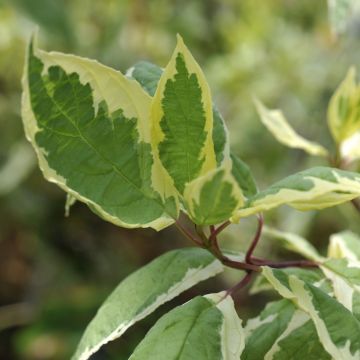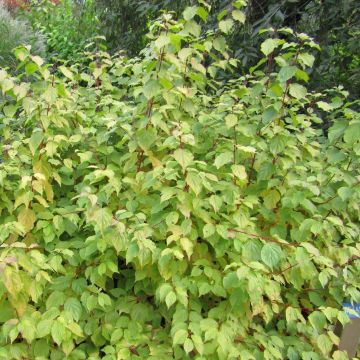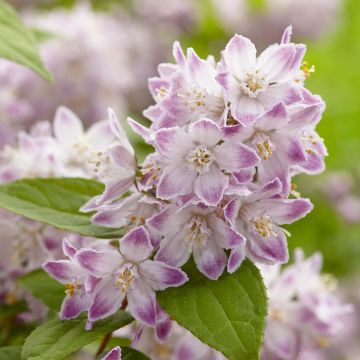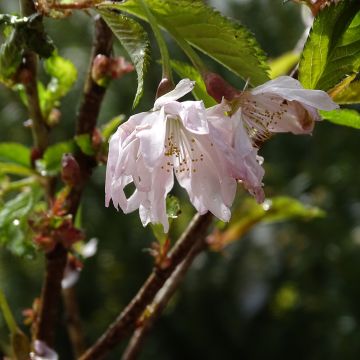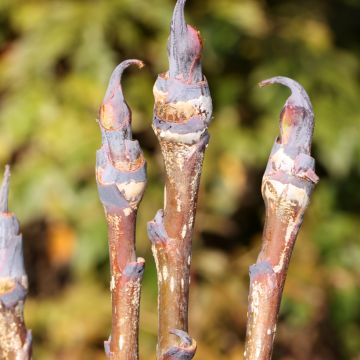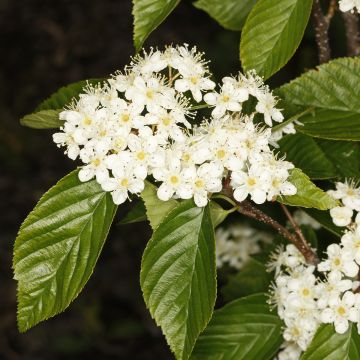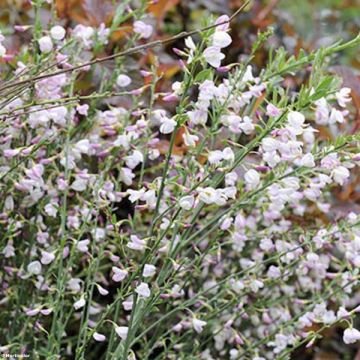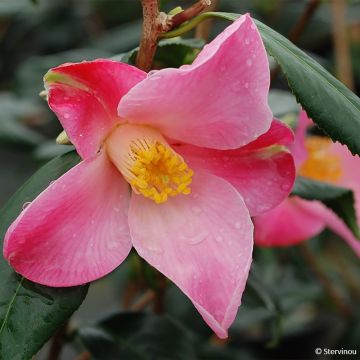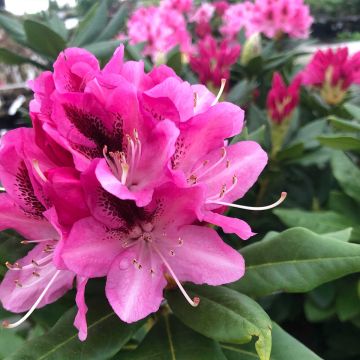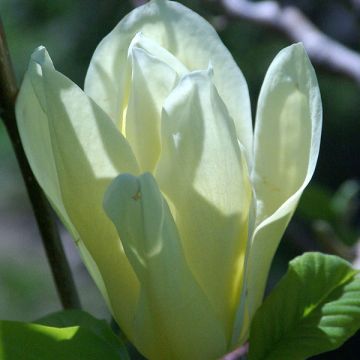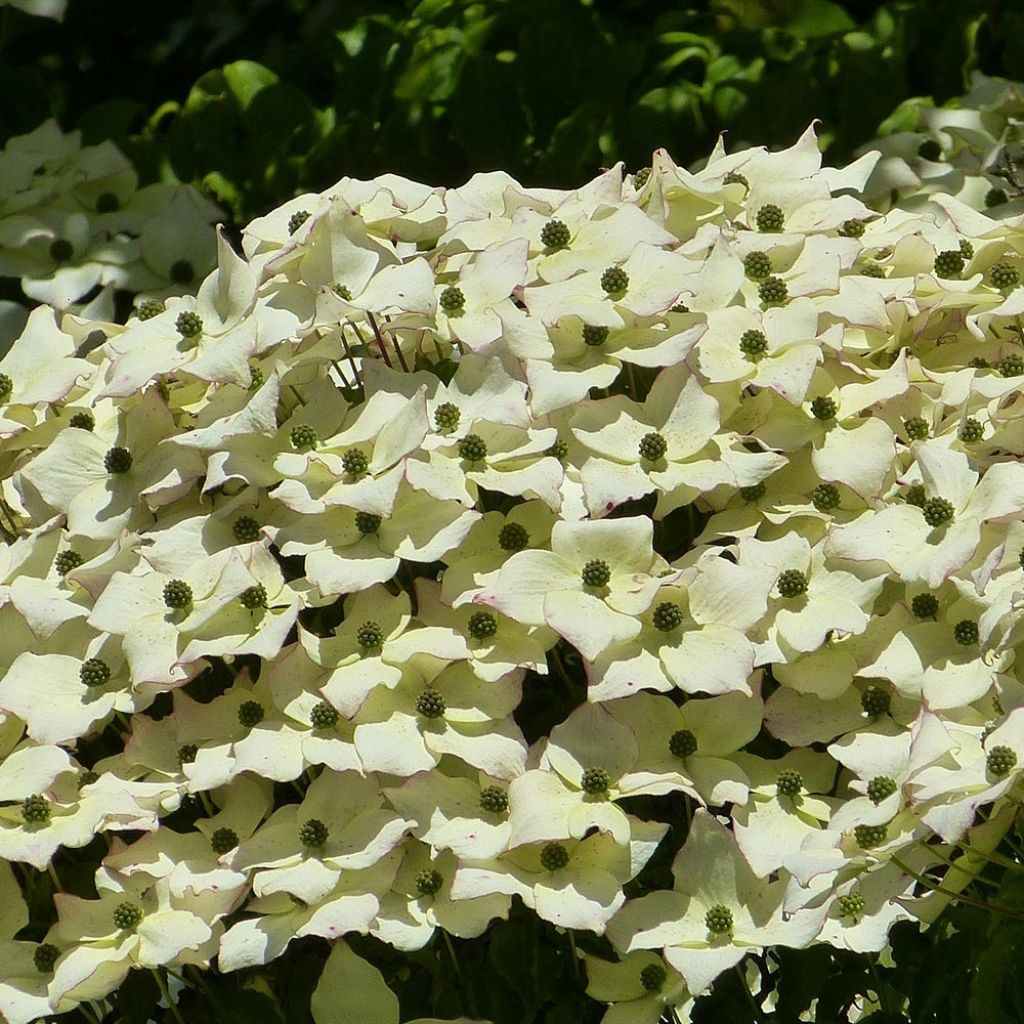

Cornus kousa - Flowering Dogwood
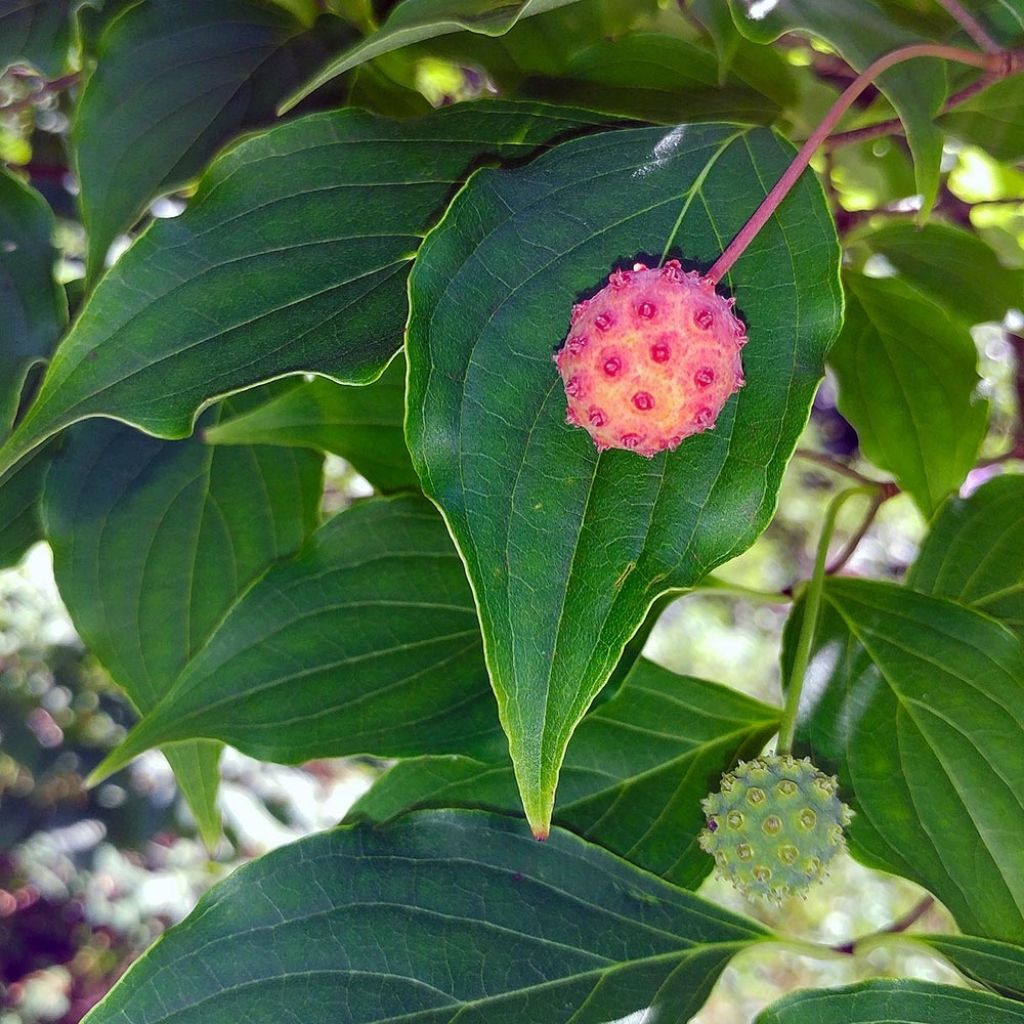

Cornus kousa - Flowering Dogwood


Cornus kousa - Flowering Dogwood
Cornus kousa - Flowering Dogwood
Cornus kousa
Kousa Dogwood, Japanese Dogwood, Chinese Dogwood
This item cannot be shipped to the selected country
Delivery charge from €5.90
More information
Schedule delivery date,
and select date in basket
This plant carries a 24 months recovery warranty
More information
We guarantee the quality of our plants for a full growing cycle, and will replace at our expense any plant that fails to recover under normal climatic and planting conditions.
From €5.90 for pickup delivery and €6.90 for home delivery
Express home delivery from €8.90.

Does this plant fit my garden?
Set up your Plantfit profile →
Description
Cornus kousa, or Japanese dogwood, is a small tree or large bush that is highly ornamental with its abundant and generous pure white flowering in spring and the vibrant colours of its autumn foliage. It has a spread-out habit with beautiful branches that develop horizontally in distinct layers, giving it an oriental style that would be especially highlighted by planting it in isolation or in a mass planting alongside other acid-loving shrubs in a Japanese garden.
In April-May, the solitary flowers bear four large, thick, snow-white bracts arranged in flat stars, creating luminous carpets on sumptuous, shiny, dark green foliage that turns orange and then scarlet-red before falling in winter. Sturdy and easy to grow, it is a perfect choice for a partially shaded corner in cool, rich, deep, well-drained, and lime-free soil.
Cornus kousa is native to Japan, China, and Korea. Its striking silhouette, supported by layered and horizontal branches, gives it a very Japanese look. This species has a spreading habit, reaching about 6 m (19.7 ft) in height and 4 m (13.1 ft) in width after many years. Despite its slow growth, it is a sturdy and easy-to-grow shrub as long as it enjoys morning or evening sun that is not too scorching, and a well-drained, preferably fertile soil without lime.
Flowering takes place in May-June, even on plants aged 3 to 4 years. The bush is adorned with a multitude of large 'flowers', which are actually inflorescences. These are clusters of small true flowers, surrounded by 4 oval bracts with particularly pointed tips, arranged in star shapes, and pure white in colour. The flowers are arranged on the tree as if they were resting on the foliage. The flowers are followed by numerous, good-sized fruits, ranging in colour from pink to carmine-red. The fruits resemble strawberries. The higher the summer temperatures, the more abundant the fruiting. The fruits are edible, fleshy, with a sweet flavour, and add charm to this large shrub at the end of the season. The shrub has shiny dark green deciduous foliage that turns orange and then scarlet-red in autumn. The leaves are ovate, strongly veined, slightly closed, somewhat undulate along the edges, and they hang down. They measure between 5 cm and 8 cm (2 in to 3.1 in) long and are arranged opposite each other along the branches.
Cornus kousa thrives in continental climates, with marked summers and winters, but it also performs well in milder areas. In hot regions, it should be planted in a spot protected from the scorching sun, in consistently moist soil. It is still rare in gardens but very easy to grow once it has been carefully planted. It alone is a beautiful attraction and deserves to be planted in isolation, standing out in the middle of a lawn, for example. It will also be advantageous at the back of a bed composed of acid-loving plants or shrubs with staggered flowering or evergreen foliage. Plant it with, for example, oakleaf or paniculate hydrangeas, Japanese maples with purple foliage, snowberries, a Cercis, a Fothergilla, or a Tetradium daniellii, the bee tree.
Report an error about the product description
Cornus kousa - Flowering Dogwood in pictures
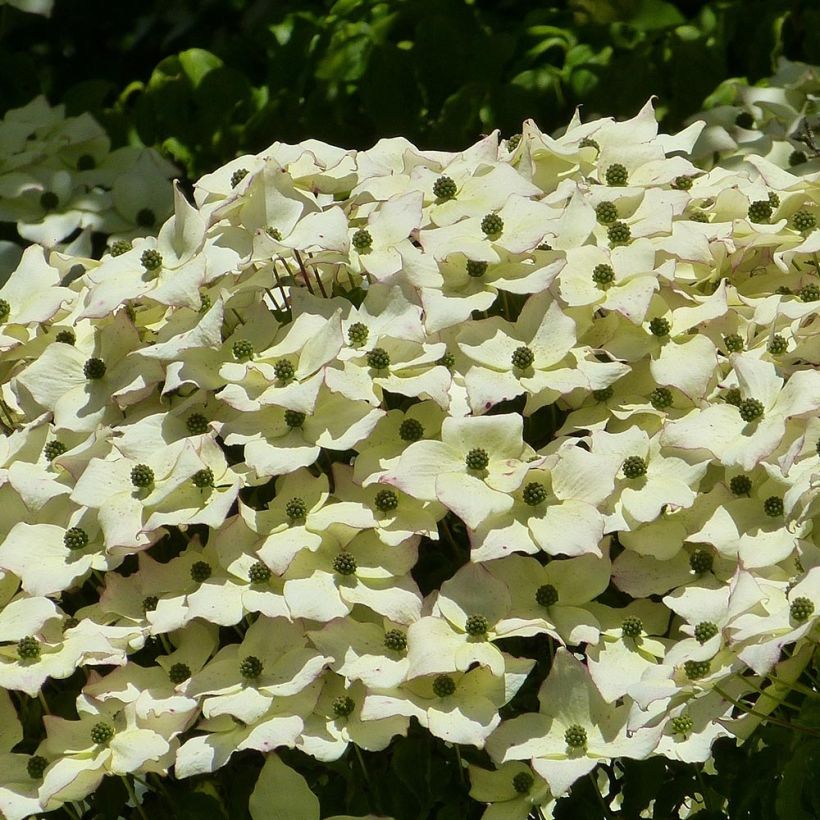

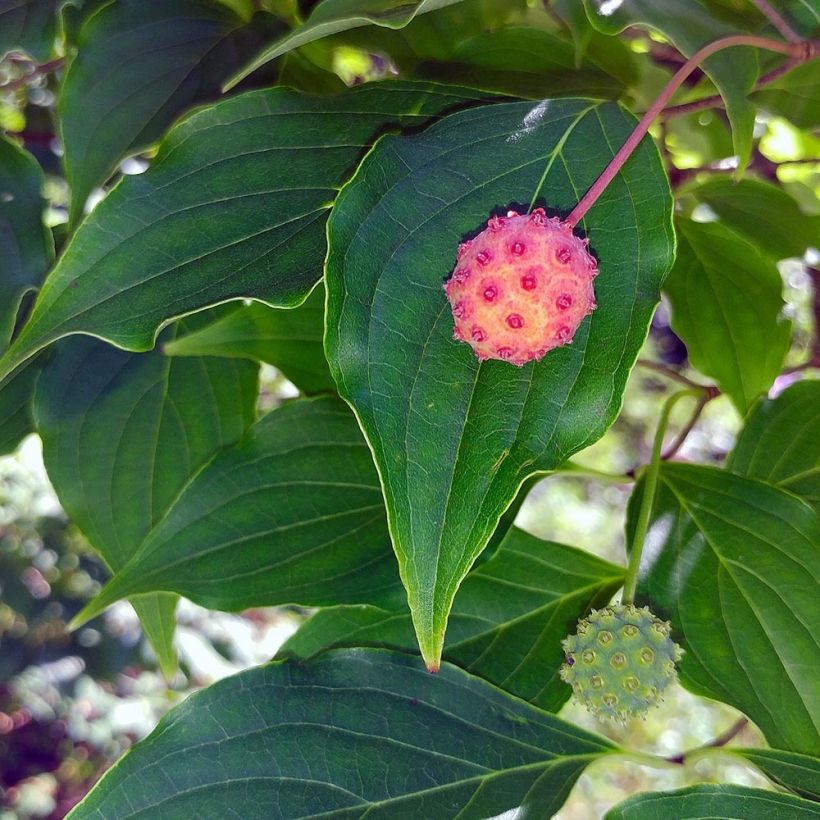



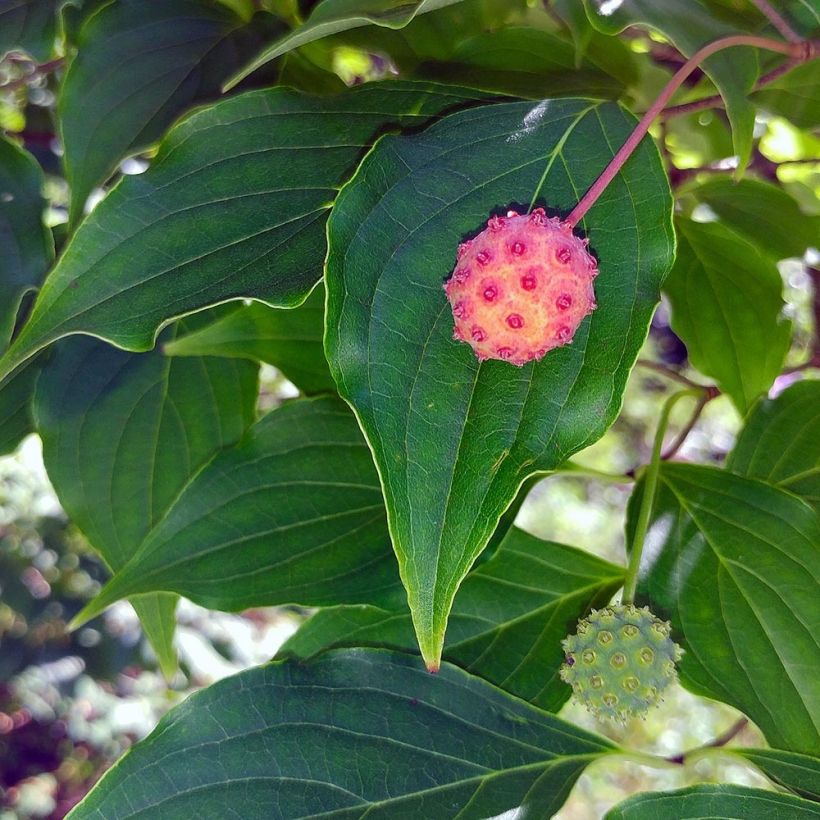

Plant habit
Flowering
Foliage
Botanical data
Cornus
kousa
Cornaceae
Kousa Dogwood, Japanese Dogwood, Chinese Dogwood
Cultivar or hybrid
Other Cornus
Planting and care
Originally from Japan, Korea, and China, Cornus kousa thrives in continental climates and temperate zones. Extremely cold temperatures during winter can result in absent or reduced flowering. However, this bush is very hardy and can withstand frost of at least -15° C (5° F). It tolerates sunny exposures in areas with moderately warm summers. In hot regions, it should be planted in a sheltered spot away from scorching sun.
It prefers deep, fertile, well-drained soils that are slightly acidic or neutral, but it can tolerate some limestone in the soil. It can endure clay soils as long as it is protected from excessive moisture, especially in winter. Plant it in a deep hole lined with clay balls, coarse sand, or gravel to ensure good drainage if necessary, in a very compact soil. Any good, balanced, and soft garden soil is suitable. At planting, add compost and leaf soil. Mulching with pine bark will help maintain freshness and promote soil acidity.
Pruning is not obligatory but can be done at the end of winter to remove diseased or dead wood and crossing branches to maintain an attractive habit. During the first two years after planting, regular watering is necessary in summer, but afterwards, it can manage on its own.
Planting period
Intended location
Care
-
, onOrder confirmed
Reply from on Promesse de fleurs
Spring-flowering shrubs
Haven't found what you were looking for?
Hardiness is the lowest winter temperature a plant can endure without suffering serious damage or even dying. However, hardiness is affected by location (a sheltered area, such as a patio), protection (winter cover) and soil type (hardiness is improved by well-drained soil).

Photo Sharing Terms & Conditions
In order to encourage gardeners to interact and share their experiences, Promesse de fleurs offers various media enabling content to be uploaded onto its Site - in particular via the ‘Photo sharing’ module.
The User agrees to refrain from:
- Posting any content that is illegal, prejudicial, insulting, racist, inciteful to hatred, revisionist, contrary to public decency, that infringes on privacy or on the privacy rights of third parties, in particular the publicity rights of persons and goods, intellectual property rights, or the right to privacy.
- Submitting content on behalf of a third party;
- Impersonate the identity of a third party and/or publish any personal information about a third party;
In general, the User undertakes to refrain from any unethical behaviour.
All Content (in particular text, comments, files, images, photos, videos, creative works, etc.), which may be subject to property or intellectual property rights, image or other private rights, shall remain the property of the User, subject to the limited rights granted by the terms of the licence granted by Promesse de fleurs as stated below. Users are at liberty to publish or not to publish such Content on the Site, notably via the ‘Photo Sharing’ facility, and accept that this Content shall be made public and freely accessible, notably on the Internet.
Users further acknowledge, undertake to have ,and guarantee that they hold all necessary rights and permissions to publish such material on the Site, in particular with regard to the legislation in force pertaining to any privacy, property, intellectual property, image, or contractual rights, or rights of any other nature. By publishing such Content on the Site, Users acknowledge accepting full liability as publishers of the Content within the meaning of the law, and grant Promesse de fleurs, free of charge, an inclusive, worldwide licence for the said Content for the entire duration of its publication, including all reproduction, representation, up/downloading, displaying, performing, transmission, and storage rights.
Users also grant permission for their name to be linked to the Content and accept that this link may not always be made available.
By engaging in posting material, Users consent to their Content becoming automatically accessible on the Internet, in particular on other sites and/or blogs and/or web pages of the Promesse de fleurs site, including in particular social pages and the Promesse de fleurs catalogue.
Users may secure the removal of entrusted content free of charge by issuing a simple request via our contact form.
The flowering period indicated on our website applies to countries and regions located in USDA zone 8 (France, the United Kingdom, Ireland, the Netherlands, etc.)
It will vary according to where you live:
- In zones 9 to 10 (Italy, Spain, Greece, etc.), flowering will occur about 2 to 4 weeks earlier.
- In zones 6 to 7 (Germany, Poland, Slovenia, and lower mountainous regions), flowering will be delayed by 2 to 3 weeks.
- In zone 5 (Central Europe, Scandinavia), blooming will be delayed by 3 to 5 weeks.
In temperate climates, pruning of spring-flowering shrubs (forsythia, spireas, etc.) should be done just after flowering.
Pruning of summer-flowering shrubs (Indian Lilac, Perovskia, etc.) can be done in winter or spring.
In cold regions as well as with frost-sensitive plants, avoid pruning too early when severe frosts may still occur.
The planting period indicated on our website applies to countries and regions located in USDA zone 8 (France, United Kingdom, Ireland, Netherlands).
It will vary according to where you live:
- In Mediterranean zones (Marseille, Madrid, Milan, etc.), autumn and winter are the best planting periods.
- In continental zones (Strasbourg, Munich, Vienna, etc.), delay planting by 2 to 3 weeks in spring and bring it forward by 2 to 4 weeks in autumn.
- In mountainous regions (the Alps, Pyrenees, Carpathians, etc.), it is best to plant in late spring (May-June) or late summer (August-September).
The harvesting period indicated on our website applies to countries and regions in USDA zone 8 (France, England, Ireland, the Netherlands).
In colder areas (Scandinavia, Poland, Austria...) fruit and vegetable harvests are likely to be delayed by 3-4 weeks.
In warmer areas (Italy, Spain, Greece, etc.), harvesting will probably take place earlier, depending on weather conditions.
The sowing periods indicated on our website apply to countries and regions within USDA Zone 8 (France, UK, Ireland, Netherlands).
In colder areas (Scandinavia, Poland, Austria...), delay any outdoor sowing by 3-4 weeks, or sow under glass.
In warmer climes (Italy, Spain, Greece, etc.), bring outdoor sowing forward by a few weeks.

































